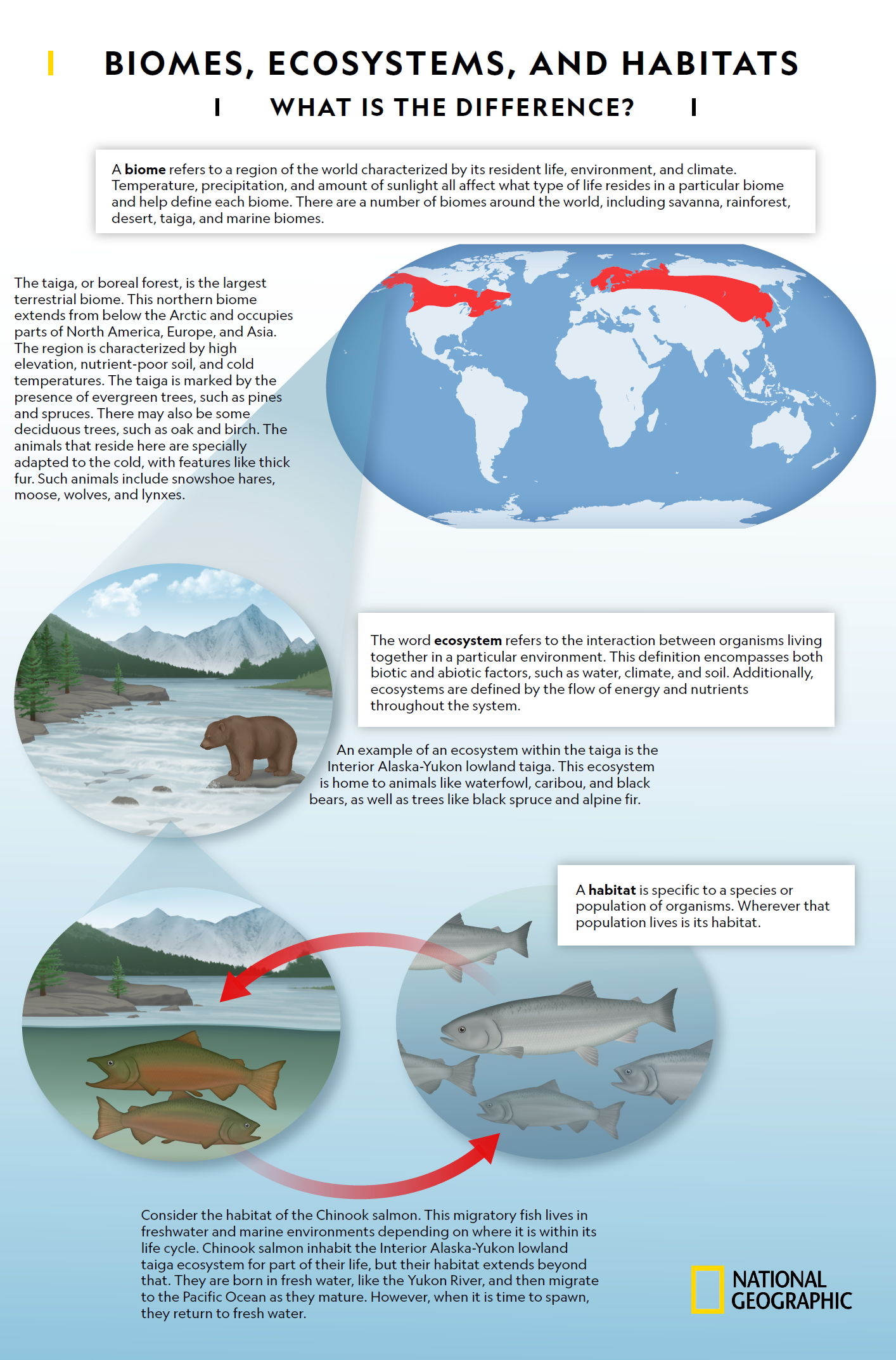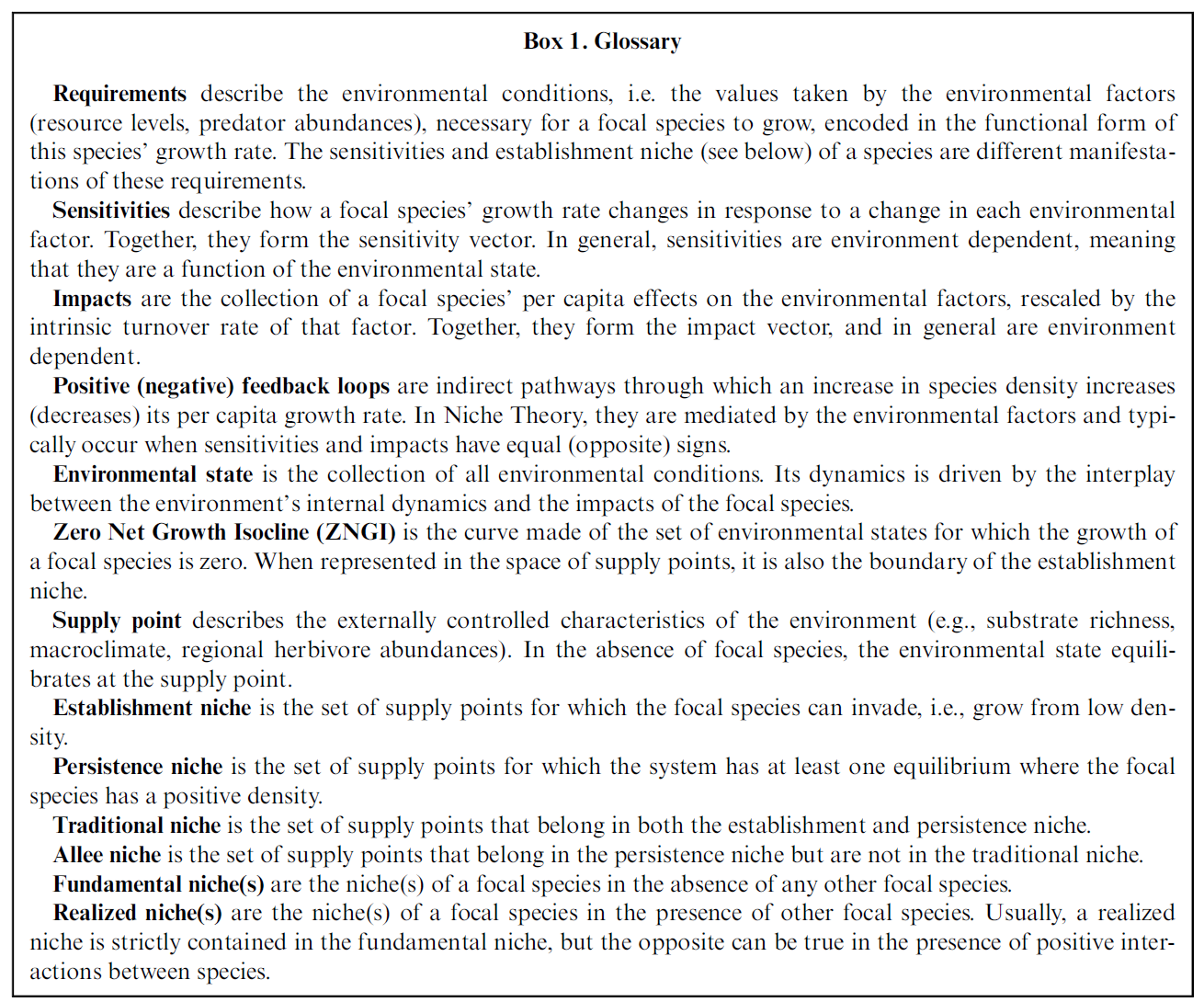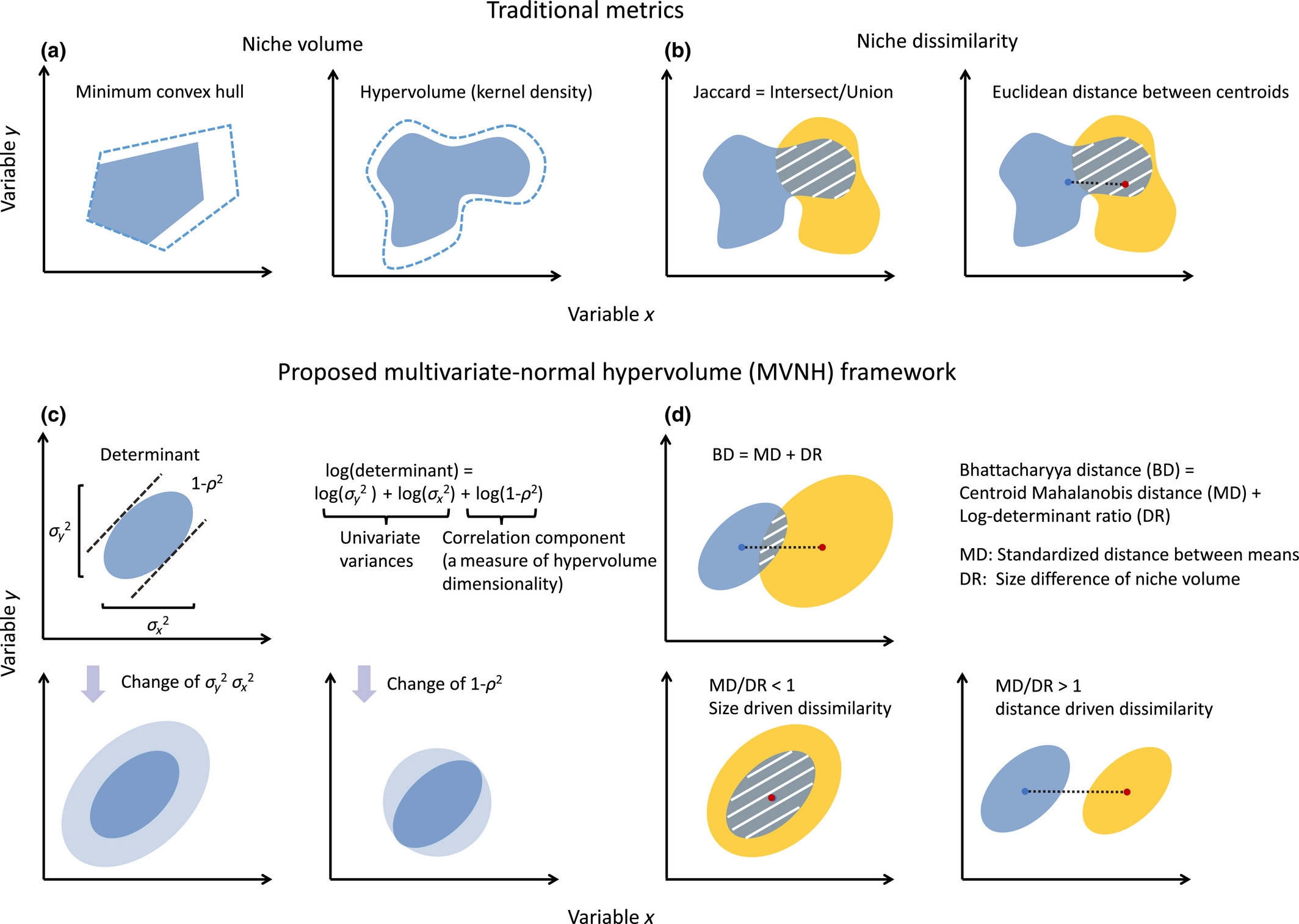Place
Definition
Concept of Place | National Geographic Society
"One of the oldest tenets of geography is the concept of place. As a result, place has numerous definitions, from the simple “a space or location with meaning” to the more complex “an area having unique physical and human characteristics interconnected with other places.” There are three key components of place: location, locale, and a sense of place. Location is the position of a particular point on the surface of the Earth. Locale is the physical setting for relationships between people, such as the South of France or the Smoky Mountains. Finally, a sense of place is the emotions someone attaches to an area based on their experiences. Place can be applied at any scale and does not necessarily have to be fixed in either time or space. Additionally, due to globalization, place can change over time as its physical setting and cultures are influenced by new ideas or technologies."
Importance
Local patterns that emerge through historical contingencies are a typical condition in the universe and, especially, on the planet Earth. Pattern of life depend on these local situations. As such, it is important to study place specificities, preserve them and design in reference to them.
Key Concepts and Issues
- Need to account for the places of nonhumans
- Need to decolonise and otherwise remove bias
- Need to remove the bias towards the description/glorification of the past to consider how the concept of place fits the needs of the future
Place in Geography
Transition Design focuses on the need for ‘cosmopolitan localism’, (Manzini 2009; Sachs 1999) a lifestyle that is place-based and regional, yet global in its awareness and exchange of information and technology.
Tim Edensor
Place and Life
This note is about the concept of niche in ecology and, by extension, in other fields.

Biomes, Ecosystems, and Habitats | National Geographic Society
Definition
Types of niches:
- ecological niche
- evolutionary niche
- cultural niche (cultural niche construction) 1, 2
- social niche 3
- emotional niche
- technological niche
- interpersonal and affective niche
- semiotic niche. 4 The world of cues around the animal, which the animal must interpret. The semiosphere is the totality of actual or potential cues in the world. It is an externalistic counterpart to the totality of Umwelts.
Processes:
- enculturation
Ecological Niche
Niche is the role of a species in its environment including responses to resources, competitors, and predators.
See the discussion in Chapter 2 in:
Odling-Smee, F. John, Kevin N. Laland, and Marcus W. Feldman. Niche Construction: The Neglected Process in Evolution. Princeton: Princeton University Press, 2003.
The concept of the evolutionary niche in Niche Construction Theory is defined as "the sum of selection pressures affecting a population". So defined, the evolutionary niche is narrower than the ecological niche.
Cases in which the evolutionary niche does not coincide with realized ecological niches:
- extreme habitat degradation
- commensalism
- non-limiting or super-abundant resources
Trappes, Rose. “Defining the Niche for Niche Construction: Evolutionary and Ecological Niches.” Biology & Philosophy 36, no. 3 (2021): 31. https://doi.org/10/gmskzw.

See this article also on Supply and "coexistence theory".
Koffel, Thomas, Tanguy Daufresne, and Christopher A. Klausmeier. “From Competition to Facilitation and Mutualism: A General Theory of the Niche.” Ecological Monographs 91, no. 3 (2021): e01458. https://doi.org/10/gjwg4k.

See chapter 13, "Evolutionary Niche" in:
Pianka, Eric R. Evolutionary Ecology. 7th ed. 1974. Reprint, San Francisco, Calif: Benjamin Cummings, 2011.
- As for the Habitat, biotic and abiotic factors define the niche.
- However, a niche is the interactions of a population with these factors and its effects.
- Niche is a part of the habitat. It describes what organisms do.
- Niche depends on the flow of energy within an ecosystem.
- If a niche is left vacant, it can then be filled by some other species. However, some organisms might create a unique niche for themselves, which reduces the competition for resources with other species.
- However, it is also important for species to be able to adapt to changes in the ecosystem to protect themselves from extinction. For this reason, many species usually adapt or evolve to thrive under a wide range of environmental conditions.
- The type and number of variables that define an ecological niche vary from species to species, and the relative importance of these variables may also vary according to the geographical and biotic contexts.
- The full range of biotic and abiotic factors utilized by species for survival form the fundamental niche, and the factors that limit the population like competition and predations are called limiting factors.
- Based on the interactions of species with the physical and biological world, niches are of three types; spatial or habitat niche, trophic niche, and multidimensional niche.
- The spatial or habitat niche is the physical area within the habitat that a species occupies.
- Trophic niche is the trophic level occupied by the species in the food chain or ecological chain.
- The multidimensional niche consists of the concept of fundamental niche and the limiting factors.
For a contrast with the notion of habitat, see: Habitat vs Niche- Definition, 14 Major Differences, Examples (thebiologynotes.com)
For a discussion, see:
Polechová, Jitka, and David Storch. “Ecological Niche.” In Encyclopedia of Ecology, edited by Brian Fath, 2nd ed., 72–80. 2008. Reprint, Oxford: Elsevier, 2019.
Cf. ecotope: the smallest spatial object or component of a geographical landscape so defined for measurement and statistical modelling.
On the brief introduction to the evolution of the ecological niche, see:
Losos, Jonathan B., ed. The Princeton Guide to Evolution. Princeton: Princeton University Press, 2014.
Sultan, Sonia E. Organism and Environment: Ecological Development, Niche Construction, and Adaption. New York: Oxford University Press, 2015.
"The niche-construction perspective within evolutionary biology is of value to the extent that it draws attention to the active, constructive capabilities of living organisms and to the many, and often neglected, forms of feedback that flow from these, be they to developmental, ecological, evolutionary, or sociocultural processes" 5
Properties and the Measurement of Niches
Loke, Lynette H. L., and Ryan A. Chisholm. ‘Measuring Habitat Complexity and Spatial Heterogeneity in Ecology’. Ecology Letters, 2022. https://doi.org/10/gqp4p2.
The Ecological Niche of Humans
An article showing evidence of early, persistent and large-scale ecological changes emanating from the activities of Humans from The Late Pleistocene also known as Upper Pleistocene is currently defined as the time between c. 129,000 and c. 11,700 years ago.
Boivin, Nicole L., Melinda A. Zeder, Dorian Q. Fuller, Alison Crowther, Greger Larson, Jon M. Erlandson, Tim Denham, and Michael D. Petraglia. “Ecological Consequences of Human Niche Construction: Examining Long-Term Anthropogenic Shaping of Global Species Distributions.” Proceedings of the National Academy of Sciences 113, no. 23 (2016): 6388–96. https://doi.org/10/f8qmfk.
For a comment on this article, see:
Ellis, Erle C., Peter J. Richerson, Alex Mesoudi, Jens-Christian Svenning, John Odling-Smee, and William R. Burnside. “Evolving the Human Niche.” Proceedings of the National Academy of Sciences 113, no. 31 (2016): E4436–E4436. https://doi.org/10/gfvhrp.
Dupré, John, and Daniel Nicholson. ‘A Manifesto for a Processual Philosophy of Biology’. In Everything Flows: Towards a Processual Philosophy of Biology, edited by Daniel J. Nicholson and John Dupré, 3–45. Oxford: Oxford University Press, 2018.
Humans Engineering of Niches
Shahab, Robert L., Simone Brethauer, Jeremy S. Luterbacher, and Michael H. Studer. ‘Engineering of Ecological Niches to Create Stable Artificial Consortia for Complex Biotransformations’. Current Opinion in Biotechnology 62 (2020): 129–36. https://doi.org/10/grqhsx.
Description and Measurement
Needs to be in 3D
Gámez, Siria, and Nyeema C. Harris. ‘Conceptualizing the 3D Niche and Vertical Space Use’. Trends in Ecology & Evolution, 2022. https://doi.org/10/gqkx4t.
And as multi-dimensional hypervolumes.

Lu, Muyang, Kevin Winner, and Walter Jetz. ‘A Unifying Framework for Quantifying and Comparing N-Dimensional Hypervolumes’. Methods in Ecology and Evolution 12, no. 10 (2021): 1953–68. https://doi.org/10/gk75nh.
Holt, Robert D. ‘Bringing the Hutchinsonian Niche into the 21st Century: Ecological and Evolutionary Perspectives’. Proceedings of the National Academy of Sciences 106, no. Supplement 2 (2009): 19659–65. https://doi.org/10/dqmfh7.
Niche Construction
Cf. habitat construction as a synonym. Also place making, placemaking.
Sultan, Sonia E. Organism and Environment: Ecological Development, Niche Construction, and Adaption. New York: Oxford University Press, 2015.
Organism’s niche-constructing activities can influence biotic and abiotic selection pressures on the organism itself, in a type of diffuse coevolution.
All niches are in some way constructed because they are a result of processes, the same must be true for places.
Organisms inevitably modify their environments via:
- physical
- by their presence
- resource uptake
- waste deposition
It is possible to measure these impacts as external to organisms but they result from and contribute to the features of the organisms themselves including eco-devo responses and adaptive functionality.
Cf. also 'cultural niche construction'.
Humans as drivers of nonhuman evolution.
Biogeomorphology
As a form of niche construction and habitat construction. Cf. anthropogeomorphology.
Viles, Heather, and Martin Coombes. ‘Biogeomorphology in the Anthropocene: A Hierarchical, Traits-Based Approach’. Geomorphology 417 (2022): 108446. https://doi.org/10/grztxb.
Critical Perspectives on Niche Construction
DiFrisco, James, and Richard Gawne. “Biological Agency: A Concept Without a Research Program.” Journal of Evolutionary Biology 38, no. 2 (2025): 143–56. https://doi.org/10/g86xdq.
Laland, Kevin, Tobias Uller, Marc Feldman, Kim Sterelny, Gerd B. Müller, Armin Moczek, Eva Jablonka, et al. “Does Evolutionary Theory Need a Rethink?” Nature 514, no. 7521 (2014): 161–64. https://doi.org/10/gdqdff.
Implications
Importance of inclusive, holistic governance and design.
Importance of continuous designing, integrated life cycle tracking.
Human Niche Construction
Kendal, Jeremy R., Jamshid J. Tehrani, and John Olding-Smee, eds. ‘Human Niche Construction’. Special issue. Philosophical Transactions of the Royal Society B: Biological Sciences 366, no. 1566 (2011): 783–934.
Ellis, Erle C., Peter J. Richerson, Alex Mesoudi, Jens-Christian Svenning, John Odling-Smee, and William R. Burnside. ‘Evolving the Human Niche’. Proceedings of the National Academy of Sciences 113, no. 31 (2016): E4436–E4436. https://doi.org/10/gfvhrp.
Altman, Arie, and Alex Mesoudi. ‘Understanding Agriculture within the Frameworks of Cumulative Cultural Evolution, Gene-Culture Co-Evolution, and Cultural Niche Construction’. Human Ecology 47, no. 4 (2019): 483–97. https://doi.org/10/gf6zxz.
Sullivan, Alexis P., Douglas W. Bird, and George H. Perry. “Human Behaviour as a Long-Term Ecological Driver of Non-Human Evolution.” Nature Ecology & Evolution 1, no. 3 (2017): 1–11. https://doi.org/10/gbrz7b.
Urban Evolution
Szulkin, Marta, Jason Munshi-South, and Anne Charmantier, eds. Urban Evolutionary Biology. Oxford: Oxford University Press, 2020.
References
The notion of niche construction (processual) is the opposite ontology to that of extended phenotype (substantialist).
Dupré, John, and Daniel Nicholson. ‘A Manifesto for a Processual Philosophy of Biology’. In Everything Flows: Towards a Processual Philosophy of Biology, edited by Daniel J. Nicholson and John Dupré, 3–45. Oxford: Oxford University Press, 2018.
Odling-Smee, F. John, Kevin N. Laland, and Marcus W. Feldman. Niche Construction: The Neglected Process in Evolution. Princeton: Princeton University Press, 2003.
Footnotes
Kendal, Jeremy R. “Cultural Niche Construction and Human Learning Environments: Investigating Sociocultural Perspectives.” Biological Theory 6, no. 3 (2011): 241–50. https://doi.org/10/g83twz.˄
Nagatsu, Michiru, Roope O. Kaaronen, Mikko Salmela, and Miles MacLeod. “Cultural Niche Construction as a Framework for Reorienting Human−Environment Relations.” Topics in Cognitive Science 15, no. 3 (2023): 413–32. https://doi.org/10/g84vjr.˄
Krueger, Joel. “Emotions and the Social Niche.” In Collective Emotions: Perspectives from Psychology, Philosophy, and Sociology, edited by Christian von Scheve and Mikko Salmella, 156–71. Oxford: Oxford University Press, 2014.˄
Hoffmeyer, Jesper. Biosemiotics: An Examination into the Signs of Life and the Life of Signs. 2005. Reprint, Scranton: University of Scranton Press, 2008.˄
Odling-Smee, John, and Kevin N. Laland. “Ecological Inheritance and Cultural Inheritance: What Are They and How Do They Differ?” Biological Theory 6, no. 3 (2011): 220–30. https://doi.org/10/ggcm7w.˄
Place is a combination of living beings that is sometimes opportunistic and often/always temporary.
"If you are familiar with a place, there is a sense of intrinsic correctness in its elements. While this sense is very strong, ecosystems are built piecemeal. The aggregations of species that produce a feeling of place also provide a sense of time. A community – the census of organisms from microbes to trees to giant herbivores – is a temporary association of living things that depends on evolutionary history, climate, geography and chance."
Halliday, Thomas. Otherlands: A World in the Making. London: Allen Lane, 2022.
Native (as in 'native species') as a term applies both to place and to time. So, it is only meaningful to speak about places as durations or event in time: stabilities, transitions, tendencies, incongruities. Refer to the long narratives (cf. The Universe Story)1 as the conceptual foundation for desirable human cultures.
Refer to niche partitioning as a place-forming tendency. Many species of penguin co-occured in Antarctica 40m years ago during the thermal maximum, 800 parts CO2, ocean 100m taller, lots of food, which is not ususal. Tipically, the niches of geographically co-ocurring speceis diverge, with life thus extending towards all potentially livable niches.
Thomas Halliday, Otherlands: A World in the Making (London: Allen Lane, 2022).
Place and Brain
Cf. 'environmental neuroscience' and the argument that brains develop in direct response to the environmental conditions.
Berman, Marc G., Omid Kardan, Hiroki P. Kotabe, Howard C. Nusbaum, and Sarah E. London. “The Promise of Environmental Neuroscience.” Nature Human Behaviour 3, no. 5 (2019): 414–17. https://doi.org/10/gjrqcb.
References
An outline following key issues
Overviews
Edensor, Tim, Ares Kalandides, and Uma Kothari, eds. The Routledge Handbook of Place. Abingdon: Routledge, 2020.
Solastalgia and Homesickness
Hediger, Ryan. Homesickness: Of Trauma and the Longing for Place in a Changing Environment. Minneapolis: University of Minnesota Press, 2019.
Footnotes
Brian Swimme and Thomas Berry, The Universe Story: From the Primordial Flaring Forth to the Ecozoic Era—A Celebration of the Unfolding of the Cosmos (New York: HarperCollins, 1992).˄
Backlinks